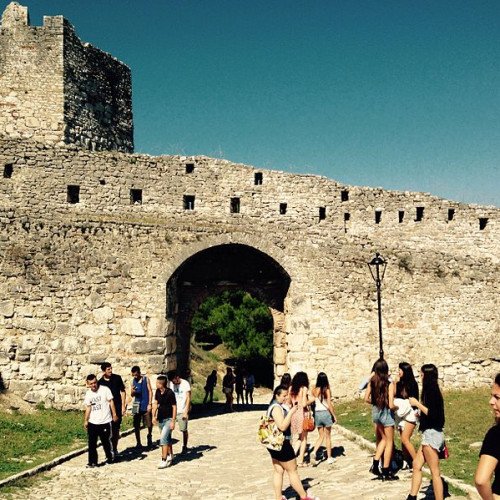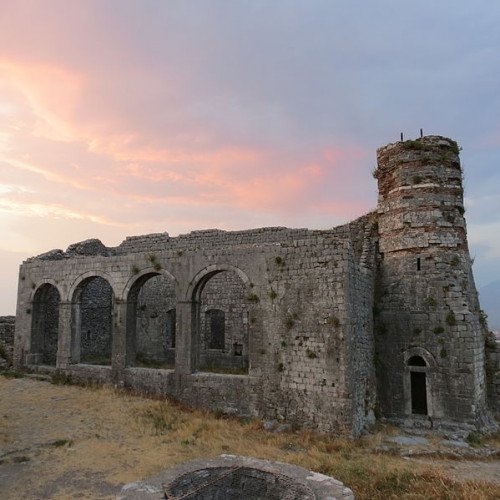Castles of "Albania" BERAT CASTLE vs ROZAFA CASTLE

BERAT CASTLE
Berat Castle (Albanian: Kalaja e Beratit), also referred to as the Citadel of Berat and castle quarter, is a fortress overlooking the town of Berat, Albania. It dates mainly from the 13th century and contains many Byzantine churches in the area and Ottoman mosques. It is built on a rocky hill on the left bank of the river Osum and is accessible only from the south. It is situated at an elevation of 214 metres (702 ft). After being burned down by the Romans in 200 B.C., the walls were strengthened in the 5th century under Roman Emperor Theodosius II to protect from Barbarian incursions into the Balkans. They were subsequently rebuilt during the 6th century under the Emperor Justinian I and again in the 13th century under the Despot of Epirus, Michael I Komnenos Doukas, cousin of the Byzantine Emperor. This last phase can be seen as a Monogram formed by red bricks set in a wall of the castle. The castle was under the rule of John Komnenos Asen in the mid-14th century The main entrance, on the north side, is defended by a fortified courtyard and there are three smaller entrances. The fortress of Berat in its present state, even though considerably damaged, remains a magnificent sight. The surface that it encompasses made it possible to house a considerable portion of the cities inhabitants. The buildings inside the fortress were built during the 13th century and because of their characteristic architecture are preserved as cultural monuments. The population of the fortress was Christian, and it had about 20 churches (most built during the 13th century) and only one mosque, for the use of the Turkish garrison (of which there survives only a few ruins and the base of the minaret). The churches of the fortress were damaged through years and only some have remained. Berat Castle is depicted on the reverse of the Albanian 10 lekë coin, issued in 1996, 2000 and 2013.
Statistics for this Xoptio

ROZAFA CASTLE
Rozafa Castle (Albanian: Kalaja e Rozafës), also known as the Shkodër Castle (Albanian: Kalaja e Shkodrës) is a castle near the city of Shkodër, in northwestern Albania. It rises imposingly on a rocky hill, 130 metres (430 ft) above sea level, surrounded by the Buna and Drin rivers. Shkodër is the seat of Shkodër County, and is one of Albania's oldest and most historic towns, as well as an important cultural and economic centre. Due to its strategic location, the hill has been settled since antiquity. It was an Illyrian stronghold during the rule of the Labeates and Ardiaei, whose capital was Scodra. During the Third Illyrian War the Illyrian king Gentius concentrated his forces in Scodra. When he was attacked by the Roman army led by L. Anicius Gallus, Gentius fled into the city and was trapped there hoping that his brother Caravantius would come at any moment with a large relieving army, but it didn't happen. After his defeat, Gentius sent two prominent tribal leaders, Teuticus and Bellus, as envoys to negotiate with the Roman commander. On the third day of the truce, Gentius surrendered to the Romans, was placed in custody and sent to Rome. The Roman army marched north of Scutari Lake where, at Meteon, they captured Gentius' wife queen Etuta, his brother Caravantius, his sons Scerdilaidas and Pleuratus along with leading Illyrians.